解析一下vue项目
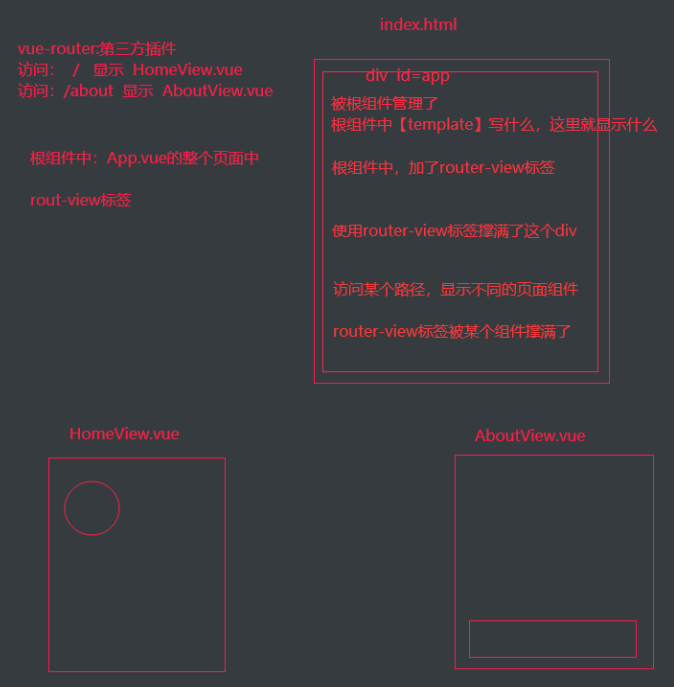
index.html文件:就是被根组件【template】写什么,这里就会显示什么在前端展示。在根组件中加了router-view标签使用router-view标签撑满这个div访问某个路由,显示不同的页面主键,router-view就是被某个组件给占了
vue-router:第三方插件它就是来完成路由匹配的:访问/显示HomeView.vue组件,访问/about显示AboutView.vue这个组件的页面
跟组件中:App.vue的整个页面中rout-view标签
导入组件的方法 import 组件名 from “../文件目录/文件名”
使用HelloWorld.vue写组件在前端使用(HomeView.vue)

Hellowold.vue文件编写
<template>
<div class="hello">
<h1>{{ msg }}</h1>
<button @click="handleClick">点击查看名字</button>
</div>
</template>
<script>
export default {
name: 'HelloWorld',
data(){
return{
name:'久保'
}
},
props: {
msg: String
},
methods:{
handleClick(){
alert(this.name)
}
}
}
</script>
HomeView.vue文件编写
<template>
<div class="home">
<HelloWorld msg="02"></HelloWorld> 使用组件因为有一个msg没有值
</div>
</template>
<script>
import HelloWorld from "@/components/HelloWorld.vue";导入组件
export default {
name: 'HomeView',
components: {
HelloWorld 注册组件
}
}
</script>
使用HelloWorld.vue写组件在前端使用(AboutView.vue)
AboutView.vue文件编写
<template>
<div class="about">
<h1>这是文件AboutView</h1>
<HelloWorld msg="02">式守</HelloWorld>
</div>
</template>
<script>
import HelloWorld from "@/components/HelloWorld";
export default {
name: 'About', 组件名
components:{
HelloWorld
}
}
</script>

路由文件router(index)
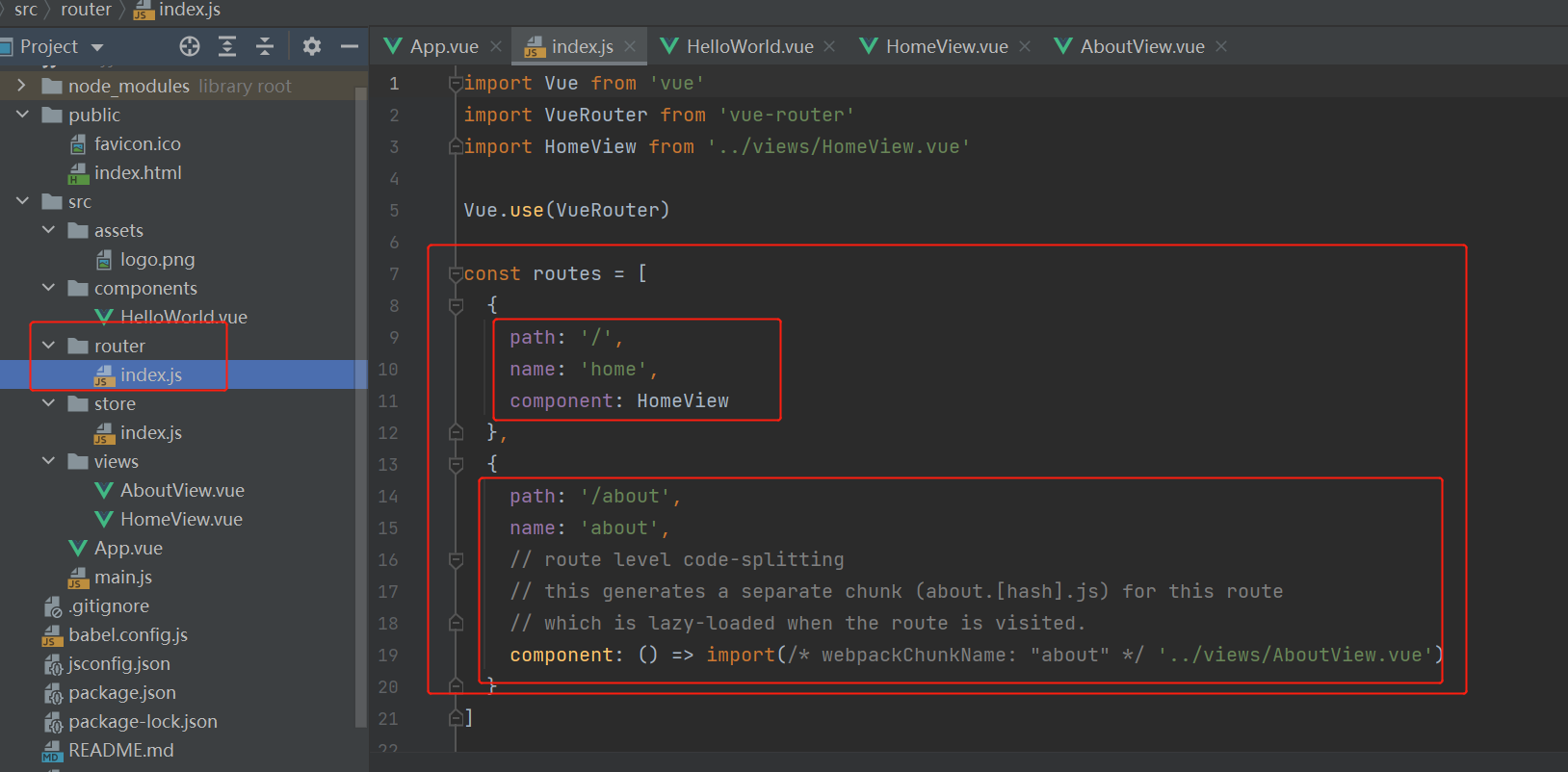
路由导入在views下创建vue文件
在router(index)中导入和注册
自己定义的文件
<template>
<div class="yjx">
<button @click="handleClick">点一下</button>
</div>
</template>
<script>
export default {
name: "02",
methods:{
handleClick(){
alert('还是久保')
}
}
}
</script>
<style scoped>
</style>
注册文件中注册
import yjx from "@/views/yjx"; 导入文件
Vue.use(VueRouter)
const routes = [
{
path: '/',
name: 'home',
component: HomeView
},
{
path: '/about',
name: 'about',
component: AboutView
}, 注册
{
path: '/yjx',
name: 'yjx',
component: yjx
}
]

浏览器展示效果
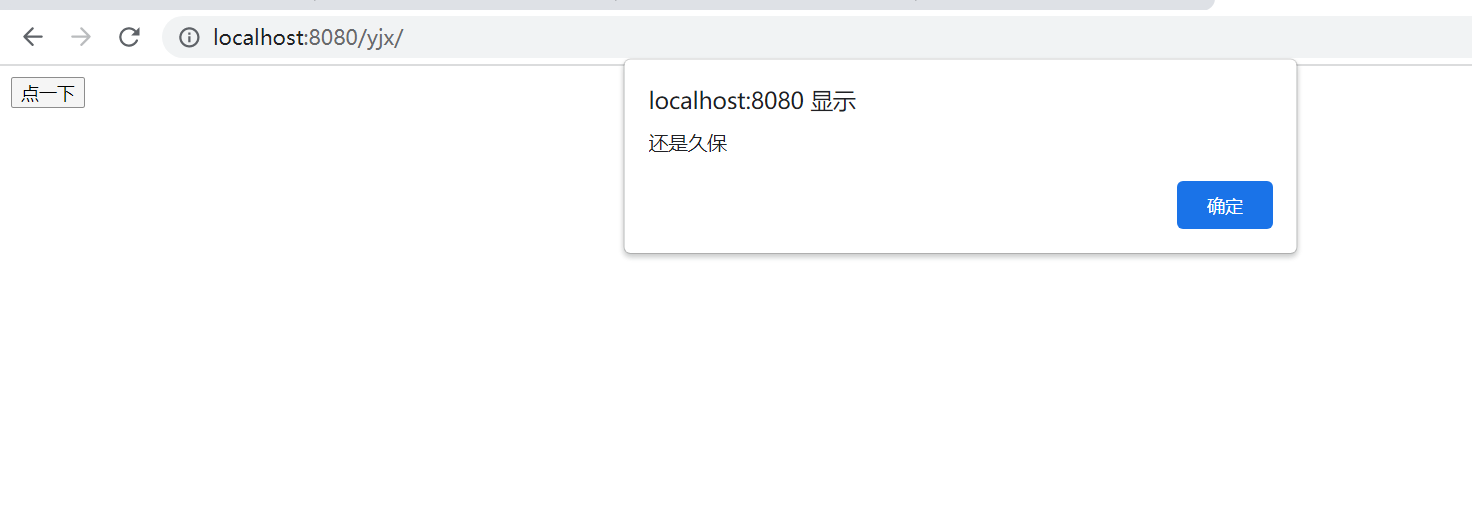
创建小组件Child.vue在页面中使用创建在components下面@符号就是src的途径替代..
在页面文件中注册一个
<template>
<div class="yjx">
<button @click="handleClick">点一下</button>
<hr>
<Child></Child>
</div>
</template>
<script>
import Child from "@/components/Child"; 导入组件文件
export default {
name: "02",
methods:{
handleClick(){
alert('还是久保')
}
},
components:{
Child 注册组件
}
}
</script>
<style scoped>
</style>
组件文件Child
<template>
<div>
<button @click="back">别退</button>{{title}}<button>冲冲冲</button>
</div>
</template>
<script>
export default {
name: "Child",
data(){
return{
title:'久保'
}
},
methods:{
back(){
alert('前面就是久保不要退')
}
}
}
</script>
<style scoped>
</style>

父组件给子组件信息
yxj文件
div里面
<Child :msg="msg"></Child>
export default里面
data(){
return {
msg:"父件的式守 msg"
}
},
Child文件接收
export default里面
props:['msg'],
div里面
父组件传的数据{{msg}}

子传父组件
子文件编写
<template>
<div>
<button @click="back">别退</button>{{title}}<button>冲冲冲</button>
<hr>
父组件传的数据{{msg}}
<hr>
<input type="text" v-model="name">----{{name}}
<button @click="handelSend">点击传给父组件</button>
</div> 点击绑定事件
</template>
<script>
export default {
name: "Child",
data(){
return{
title:'久保',
name:'' 定义一下
}
},
methods:{
back(){
alert('前面就是久保不要退')
},handelSend(){
this.$emit('sui',this.name)
} 获取input输入的数据传给父件
},
props:['msg'],
}
</script>
<style scoped>
</style>
父件的编写
<template>
<div class="yjx">
<button @click="handleClick">点一下</button>
子组件传来的{{name}} 展示到前端
<hr>
<Child :msg="msg" @sui="hand"></Child>
</div> 子组件的事件sui接收数据绑定方法
</template>
<script>
import Child from "@/components/Child";
export default {
name: "02",
data(){
return {
msg:"父件的式守 msg",
name: '' 要定义一下
}
},
methods:{
handleClick(){
alert('还是久保')
},
hand(name){ 接收数据
this.name = name
}
},
components:{
Child
}
}
</script>
<style scoped>
</style>
在加一个插件在子组件哦都是在div中
子件中
<h1>插槽使用</h1>
<slot></slot>
<h1>插槽结束</h1>
父件中
<Child :msg="msg" @sui="hand">
<div>插件的作用式守久保</div>
</Child>
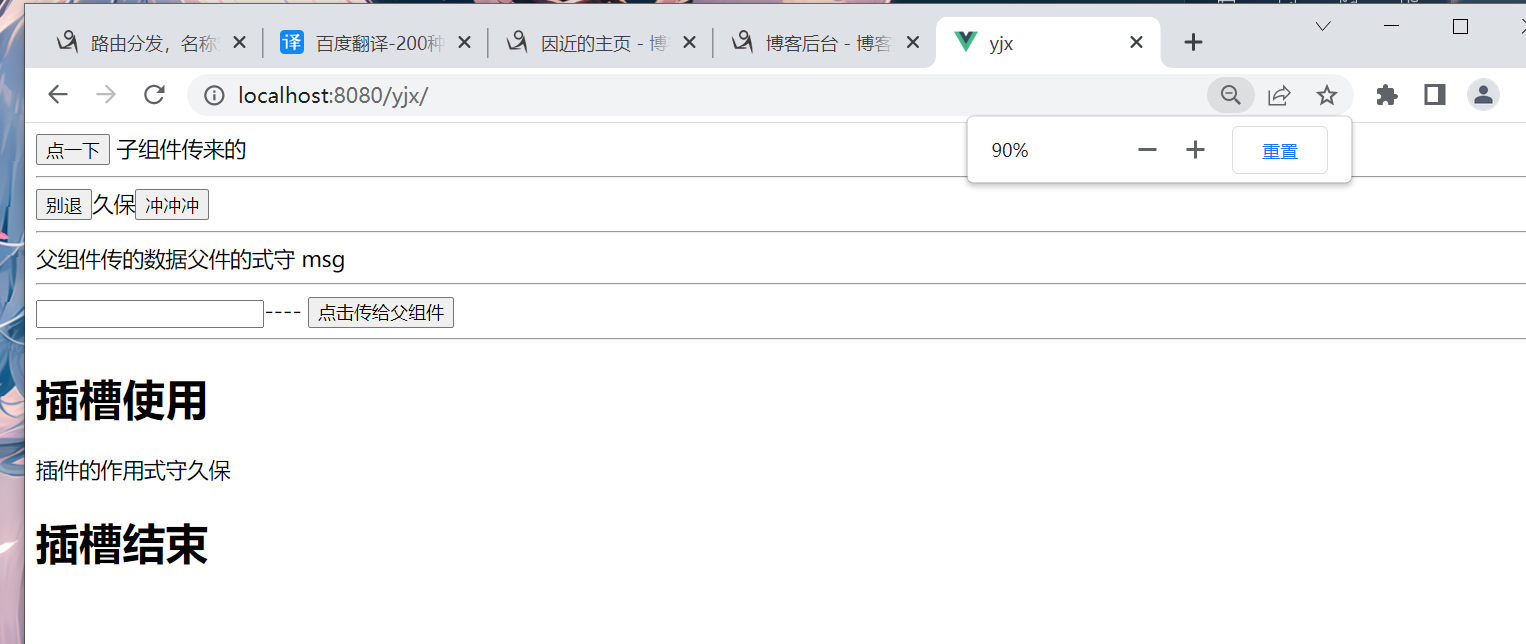
前后端实现登录
前端页面编写
在views目录下创建一个vue文件
<template>
<div>
<p>用户名: <input type="text" v-model="name"></p>
<p>密码: <input type="text" v-model="password"></p>
<button @click="handleSumbit">登录</button>
</div>
</template>
<script>
import axios from 'axios' 导入axios
export default {
name: "loginview",
data(){
return{name:'',
password:'',}
},
methods:{
handleSumbit(){
axios.post('http://127.0.0.1:8000/login/',{ 发送数据的地址
name: this.name,
password: this.password
}).then(res =>{
if(res.data.code==100){
location.href='https://www.bilibili.com/' 跳转的网址
}else{
alert(res.data.msg)
}
})
}
}
}
</script>
<style scoped>
</style>
在注册一下
import loginview from "@/views/loginview";
Vue.use(VueRouter)
const routes = [
{
path: '/',
name: 'home',
component: HomeView
},
{
path: '/about',
name: 'about',
component: AboutView
},
{
path: '/yjx',
name: 'yjx',
component: yjx
},
{
path: '/login',
name: 'login',
component: loginview
}
]
后端的编写
解决跨域问题
注册一下
INSTALLED_APPS = (
...
'corsheaders',
...
)
添加中间件
MIDDLEWARE = [
...
'corsheaders.middleware.CorsMiddleware',
...
]
配置文件中添加配置
CORS_ORIGIN_ALLOW_ALL = True
CORS_ALLOW_METHODS = (
'DELETE',
'GET',
'OPTIONS',
'PATCH',
'POST',
'PUT',
'VIEW',
)
CORS_ALLOW_HEADERS = (
'XMLHttpRequest',
'X_FILENAME',
'accept-encoding',
'authorization',
'content-type',
'dnt',
'origin',
'user-agent',
'x-csrftoken',
'x-requested-with',
'Pragma',
'token'
)
视图层编写views
from django.http import JsonResponse
import json
def login(request):
data = json.loads(request.body) 与前端字符编译一下
name = data.get('name')
password = data.get('password')
if name == 'yjx' and password == '123':
return JsonResponse({'code': 100, 'msg': '登录成功'})
else:
return JsonResponse({'code': 101, 'msg': '用户名或者密码错误'})
路由配置
path('login/', views.login)
scoped
加了scoped,表示样式只在当前组件生效,如果不加,子组件都会使用这个样式
<style scoped>
写在这里的样式只会生效在当前组件
</style>
ref属性(放在普通标签上,通过 this.\(refs.名字---》取到的是dom对象,可以直接操作dom,放在组件上,通过该this.\)refs.名字---》取到的是组件对象,这样在父组件中,就拿到了子组件对象,对象属性和方法直接用即可)
前端html文件父组件
<template>
<div class="home">
<h1>refs的使用</h1>
<input type="text" v-model="name" ref="input"> ---->{{name}}
<br>
<button @click="handleClick">看控制台</button>
<br>
<yzx ref="my"></yzx>
</div>
</template>
<script>
import yzx from "@/components/yzx";
export default {
name: 'HomeView',
data(){
return{
name
}
},
components: {
yzx
},
methods:{
handleClick(){
console.log(this.$refs)
// this.$refs.input.value= 'yjx' input框里就是这个数据
// this.$refs.my 就是组件对象
// console.log(this.$refs.my.name) 拿的就是组件的name值
this.$refs.my.haneleClick() 父件也弹的是子件的name属性
this.$refs.my.name='式守' 父件更换了子件的name值
}}
}
</script>
子组件文件
<template>
<div>
<h2>组件</h2>
<button @click="haneldClick">点我看好看的</button>
</div>
</template>
<script>
export default {
name: "yzx",
data(){
return{
name:"叶子曦"
}
},
methods:{
haneldClick(){
alert(this.name)
}
}
}
</script>
<style scoped>
</style>
props其它子件的使用
props: {
msg: {
type: String, //类型
required: true, //必要性
default: '老王' //默认值
}
}
混入mixin,多个就用逗号隔开,要什么注册什么
就是把多个组件共用的配置提取成一个混入对象(如果自己有数据就用自己的)
使用方法在src文件创建一个mixin文件夹,创一个js文件在里面写变量和函数
export const yjx = {
data(){
return{
name:'yzx'
}
},
methods: {
yjx(){
alert(this.name)
}
}
}
在html文件中使用就不用传变量跟属性
<template>
<div>
<h1>叶子曦</h1>
<button @click="yjx">点一下</button> 这样就不用自己写
</div>
</template>
<script>
import {yjx} from '@/mixin' 导入进来
export default {
name: "YzxView",
data(){
return{}
},
methods:{},
mixins:[yjx] 注册一下
}
</script>
<style scoped>
</style>
定义全局混入文件(在main文件中添加)
import {yjx} from "@/mixin";
Vue.mixin(yjx)
插件(用于增强Vue,有很多第三方插件)
Vue.prototype.\(aa='aa'添加数据拿的话this.\)aa(防止与属性里定义的aa给重叠了)
使用方法
1 定义插件:plugins---》index.js---》
export default {
install() {
# 1 在vue实例中放属性
# 2 定义混入,全局都可以使用混入
# 3 自定义指令(不讲了)---》以后我们可能使用了一个第三方插件,它提供了一些指令 v-lq
# 4 定义全局组件---》全局
}
}
在main.js中 使用插件
import (自己定义的插件名) from '@/plugins'
Vue.use(插件名) # 这句话,就会执行lqz中得install,并且把vue传入
Elementui
在vue项目中引入 elementui
在项目中安装:cnpm install element-ui -S
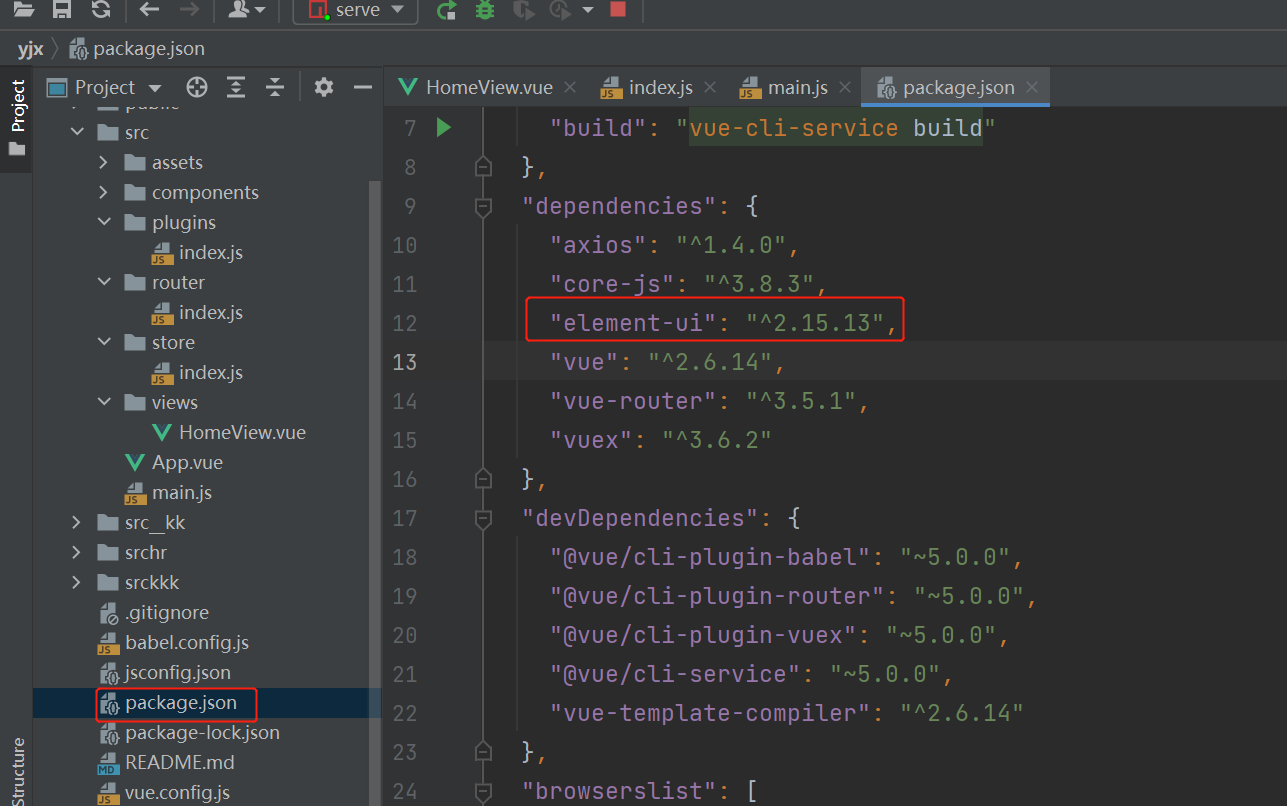
main.js配置这三个
import ElementUI from 'element-ui'; // 把对象引入
import 'element-ui/lib/theme-chalk/index.css'; // 把样式引入
Vue.use(ElementUI)
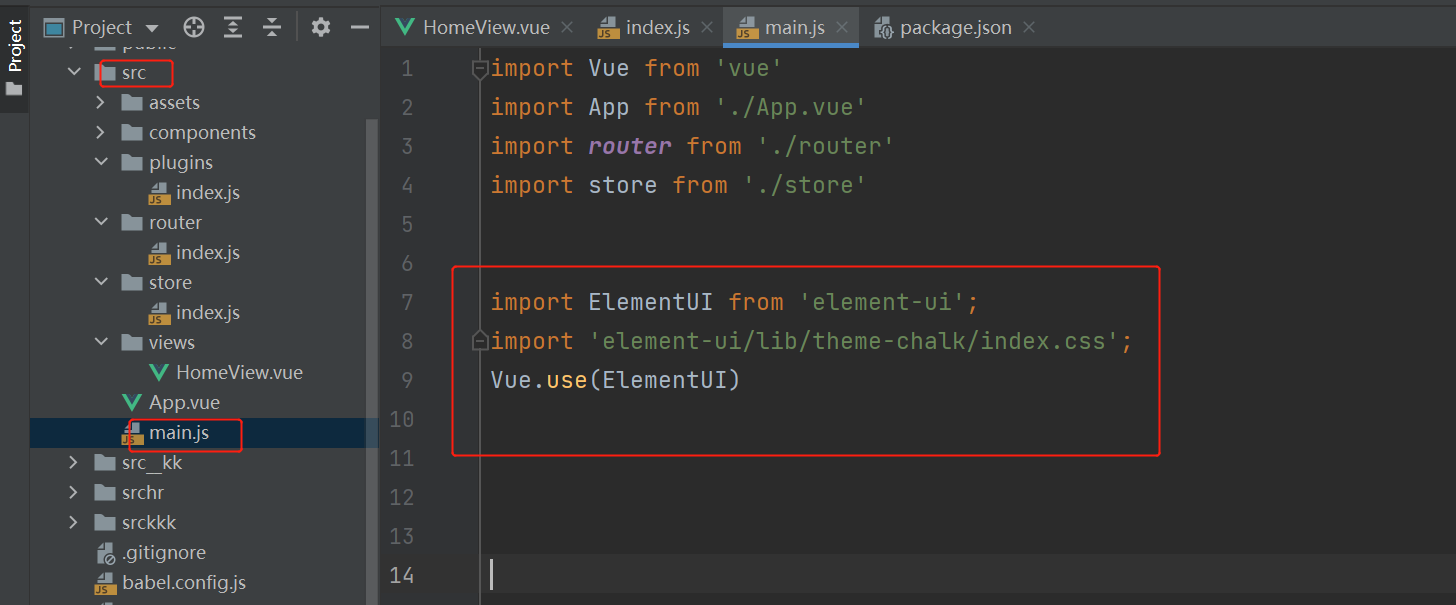
根据自己的需要导入对应的样式要求
<template>
<div> 需要的内容cv
<el-row>
<el-col :span="12"><div class="grid-content bg-purple"></div></el-col>
<el-col :span="12"><div class="grid-content bg-purple-light"></div></el-col>
</el-row>
</div>
</template>
<script>
export default {
name: "yj"
}
</script>
<style scoped> 样式cv
.el-row {
margin-bottom: 20px;
&:last-child {
margin-bottom: 0;
}
}
.el-col {
border-radius: 4px;
}
.bg-purple-dark {
background: #99a9bf;
}
.bg-purple {
background: #d3dce6;
}
.bg-purple-light {
background: #e5e9f2;
}
.grid-content {
border-radius: 4px;
min-height: 36px;
}
.row-bg {
padding: 10px 0;
background-color: #f9fafc;
}
</style>












